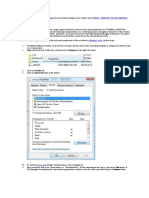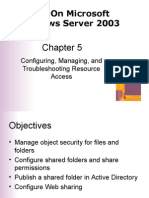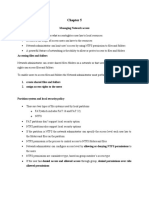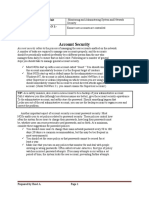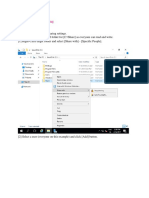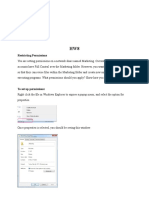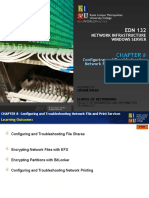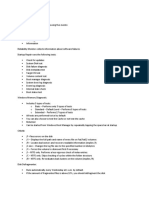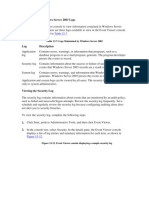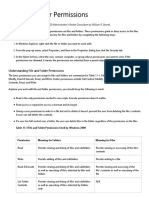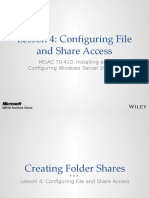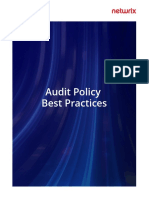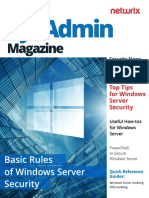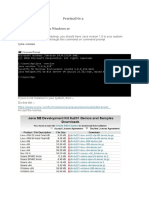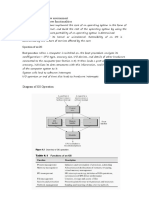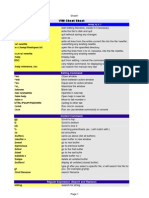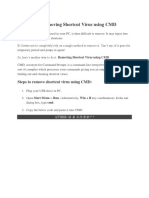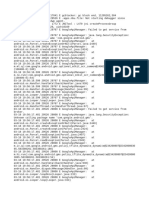0% found this document useful (0 votes)
22 views3 pagesNW Admin Lab Exercise 3-2
This document contains information about file sharing, security, and installing a print server in Windows 2003 Server. It discusses default shares, accessing shares, sharing folders, setting permissions for users and groups, taking ownership of files and folders, auditing security events, installing a printer on the server, and configuring clients to access the shared printer. The document provides step-by-step instructions for common administration tasks in Windows 2003 Server such as sharing, permissions, auditing, and print server setup.
Uploaded by
xyzalimohamed76Copyright
© © All Rights Reserved
We take content rights seriously. If you suspect this is your content, claim it here.
Available Formats
Download as DOCX, PDF, TXT or read online on Scribd
0% found this document useful (0 votes)
22 views3 pagesNW Admin Lab Exercise 3-2
This document contains information about file sharing, security, and installing a print server in Windows 2003 Server. It discusses default shares, accessing shares, sharing folders, setting permissions for users and groups, taking ownership of files and folders, auditing security events, installing a printer on the server, and configuring clients to access the shared printer. The document provides step-by-step instructions for common administration tasks in Windows 2003 Server such as sharing, permissions, auditing, and print server setup.
Uploaded by
xyzalimohamed76Copyright
© © All Rights Reserved
We take content rights seriously. If you suspect this is your content, claim it here.
Available Formats
Download as DOCX, PDF, TXT or read online on Scribd
/ 3







